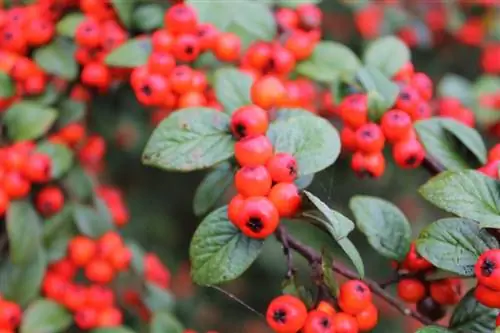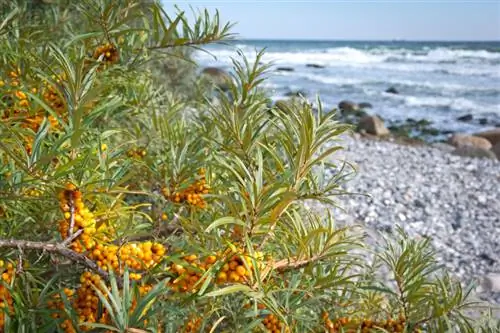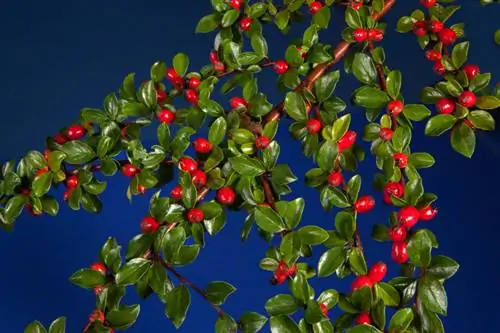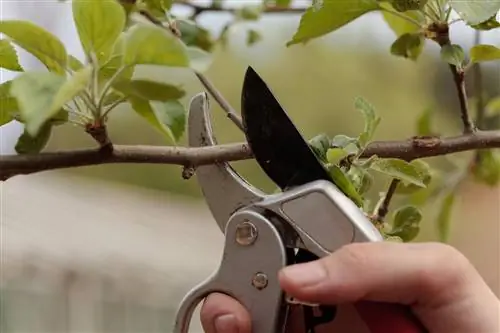- Author admin [email protected].
- Public 2023-12-24 06:09.
- Last modified 2025-06-01 06:02.
The attractive medlar tree (Mespilus germanica), which was very well known in the Middle Ages, has become rare, although it produces tons of tasty fruit. Not only is it an ideal bee pasture and a real gem in the garden, but it is also particularly easy to care for.
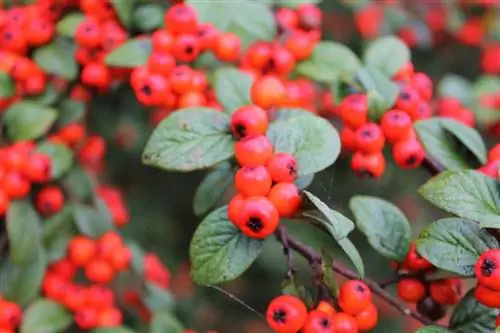
When and how should you prune a medlar tree?
When pruning the medlar tree, planting pruning is important to ensure the supply of the young tree. Optionally, spindle training can be carried out to regulate the growth height. As you get older, thinning cuts are necessary in autumn to remove brittle branches and maintain the yield.
Choose the right variety
Unlike European fruit trees, which, like the medlar tree, belong to the rose family (Rosaceae), it is difficult to train with regular cuts. While the wild form appears bushy, the medlar tree not only loses the unloved thorns through grafting and improves the taste and size of its fruits, but also changes its habit.
Row ash, pear, hawthorn or quince serve as a base. The medlar comes closest to the latter growth form. It reaches a height of 3 - 4 meters with a characteristic width of 3 - 5 meters. The branches even reach to the ground, especially when they are fully laden with fruit. The bizarre, unique habit of the medlar can only be seen in its full size, with as little care as possible.
The plant cut
In order to ensure that the young tree is cared for in its new environment, you must not forgo pruning. For this purpose, the young medlar tree is trimmed in height and its branches are reduced.
The spindle education
As is common in orchards, you can regulate the growth height of the medlar in a way that is compatible with spindle training. To do this, the trunk extension is cut off about 30 cm above the last branch every summer until the desired tree size is reached. From now on, cut the trunk extension directly above the last branch shoot. Through this derivation, as experts call it, the tree no longer grows in height, but only in width. However, the medlar tree does not tolerate shortening of the side shoots, as is usual with spindle training.
Increased need for pruning in old age
The medlar tree grows approx.50 years old and bears plenty of fruit after just 3 years. To ensure that yields do not decrease with age, you must remove brittle, withered, old and drooping branches. While the summer is ideal for optional training pruning, you should do the thinning pruning in the fall. Sharp working materials (€39.00 at Amazon) are essential so that the wound heals quickly and no pathogens can enter. With this care, the medlar tree will thank you well into old age with sufficient fruit yield and a fascinating appearance.

